"Louis Hayet (1864-1940) "
For once I have repositioned this ad, because since I offered this work a few months ago, I have just found 2 important information, in 2 catalogs of two Louis workshop sales Hayet which took place at Maître Binoche in Paris in 2001 and 2002 .... And there, surprise, I noticed that the two works that I proposed had passed in these 2 sales (go see my 2nd work for sale, a watercolor from 1884/1885). So this oil was sold on May 15, 2001 under number 91, reproduced twice in this catalog, including on the back cover, but above all it had sold for 155,000 francs or nearly 23,600 €, one of the biggest results. of this sale (see last photo). We also find this result on Artprice. It is therefore a RARE and SUBLIME oil / cardboard by Louis Hayet representing a lively funfair scene in Paris with women, children and horses ... circa 1892/1894, discreet trace of signature or stamp at the bottom of left (I had to contrast the photo to be able to see it) + marked, numbered + red stamp from the Jean Sutter collection on the back and finally and above all listed and reproduced in the reference catalog of Louis Hayet by Guy Dulon and Christophe Duvivier page 184 with his preparatory drawing (see penultimate photo of the advertisement). It is therefore a splendid pointillist composition by Louis Hayet representing one of his favorite subjects, a lively scene of Parisian life at the end of the 19th century, here elegant women, children and horses, therefore dated between 1892 and 1894 , which is certainly not the painter's most sought-after and listed period which is between 1886/1889, but all the same the period just after, where Hayet still divides his touch, certainly he dares less than 6 years before , but we can still see a very nice vibration of the pattern. I will only introduce Louis Hayet succinctly as his fame is well established, in fact he was part with Seurat, Signac, Camille and Lucien Pissarro, Dubois-Pillet, Angrand, Gausson, Luce or Pourtau of the precursors of the neo movement. -impressionist. Even if he is probably the least side of the group, a bit like Guillaumin among the Impressionists, due in part to a very hard life, he was forced to provide for his family, but also because of his strong character, since 'he refused several exhibitions which were going to be decisive, as well as to exhibit at large merchants ......... despite this, amateurs are not mistaken about the quality of his painting and the importance he had in this famous movement. Louis Hayet was born in Pontoise, his parents, Calixte Hayet and Léontine Dufour, are very poor. At school, Louis Hayet is shy and reserved but is considered intelligent and gifted. His predisposition for painting appeared in 1876. From 1877 to 1884, he traveled the roads with his father, a traveling merchant. He succeeded in enrolling in the School of Decorative Arts (Paris). He joined the neo-impressionist group, first with Camille Pissarro and his son Lucien, then Paul Signac and especially Georges Seurat, who marked him deeply. First pointillist, he returned to a more classic way in 1890, after exhibiting La Place de la Concorde aux Indépendants with the Groupe des XX, and Paul Signac deleted any mention of Louis Hayet in the second edition of his work D'Eugène Delacroix to neo-impressionism (the manifesto of pointillism). He painted circus scenes and cityscapes in the spirit of Seurat. He has a workshop in La Frette, and produces many landscapes of the surroundings. We owe him seascapes from his travels in Brittany, views of Montmartre where he had a studio in rue d'Orchampt in 1890. He was a witness at the wedding of the painter Georges Tardif in 1894 at the town hall of the 18th arrondissement of Paris. Exhibiting at Le Barc de Boutteville at the end of 1895, he met Lugné-Poe who asked him, for thirty years, to create sets for the Théâtre de l'Oeuvre, without winning his case. His cousin, director of the d'Alembert school in Montévrain, hired him as an ornamental drawing teacher, a position he kept until 1911. In 1910, he won the Lépine competition for his tripod articulated with his table. triptych. Hayet devoted the end of his career to scientific research on pigments or color, without ceasing to paint. His production was reduced from the end of the 1920s. He published a philosophical tale in 1932, Kun l'ahuri. A college in the town of Cormeilles-en-Parisis (Val-d'Oise) received the name of the painter in his homage. Some critics, including his biographer Jean Sutter, consider Hayet's production to be quite difficult to date and totaling 500 canvases, half of which would have disappeared and the other half were saved in extremis from the landfill ....! The painting that I am proposing is therefore most interesting not only by its quality but also by the fact that it is reproduced and listed in the catalog; the cardboard is in perfect condition, the former owner has chosen to have it framed under glass (which is not an obligation ...), in a contemporary baguette with Marie-louise. Obviously guaranteed authentic. 



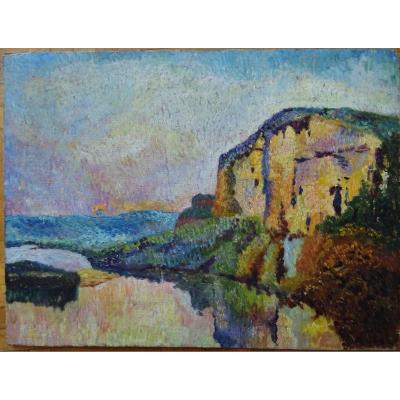
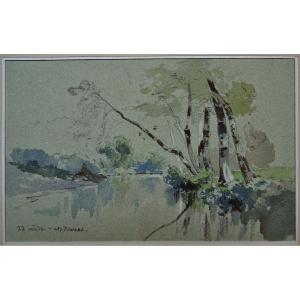
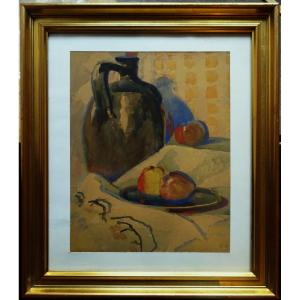
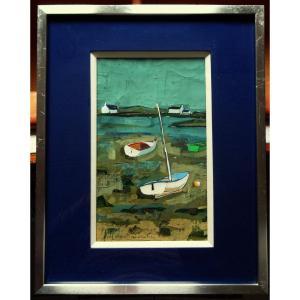






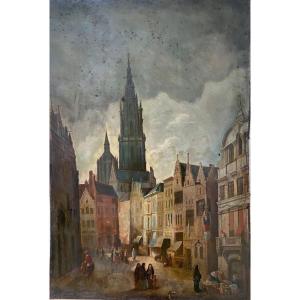





 Le Magazine
Le Magazine Rivista Artiquariato
Rivista Artiquariato TRÉSORS magazine
TRÉSORS magazine











